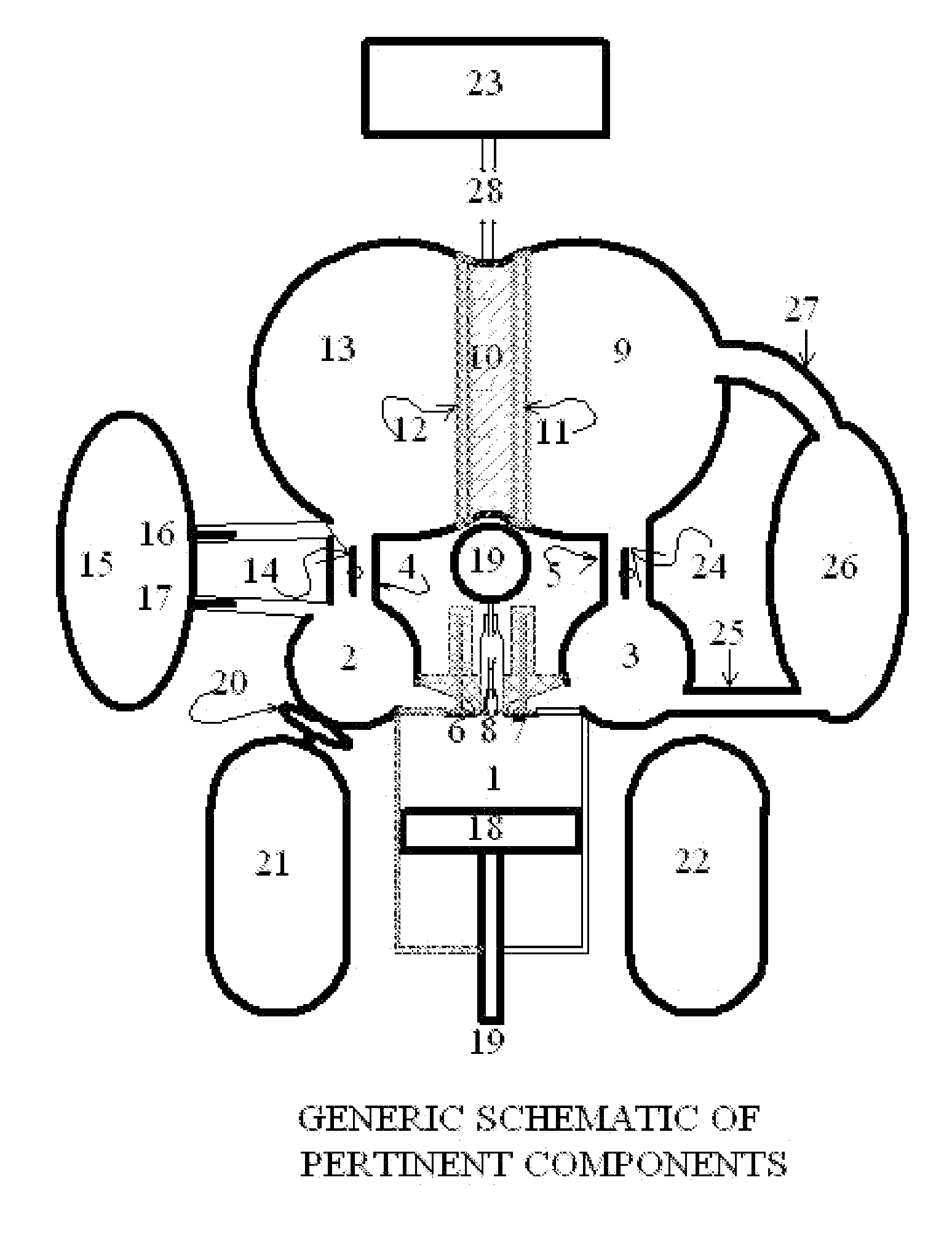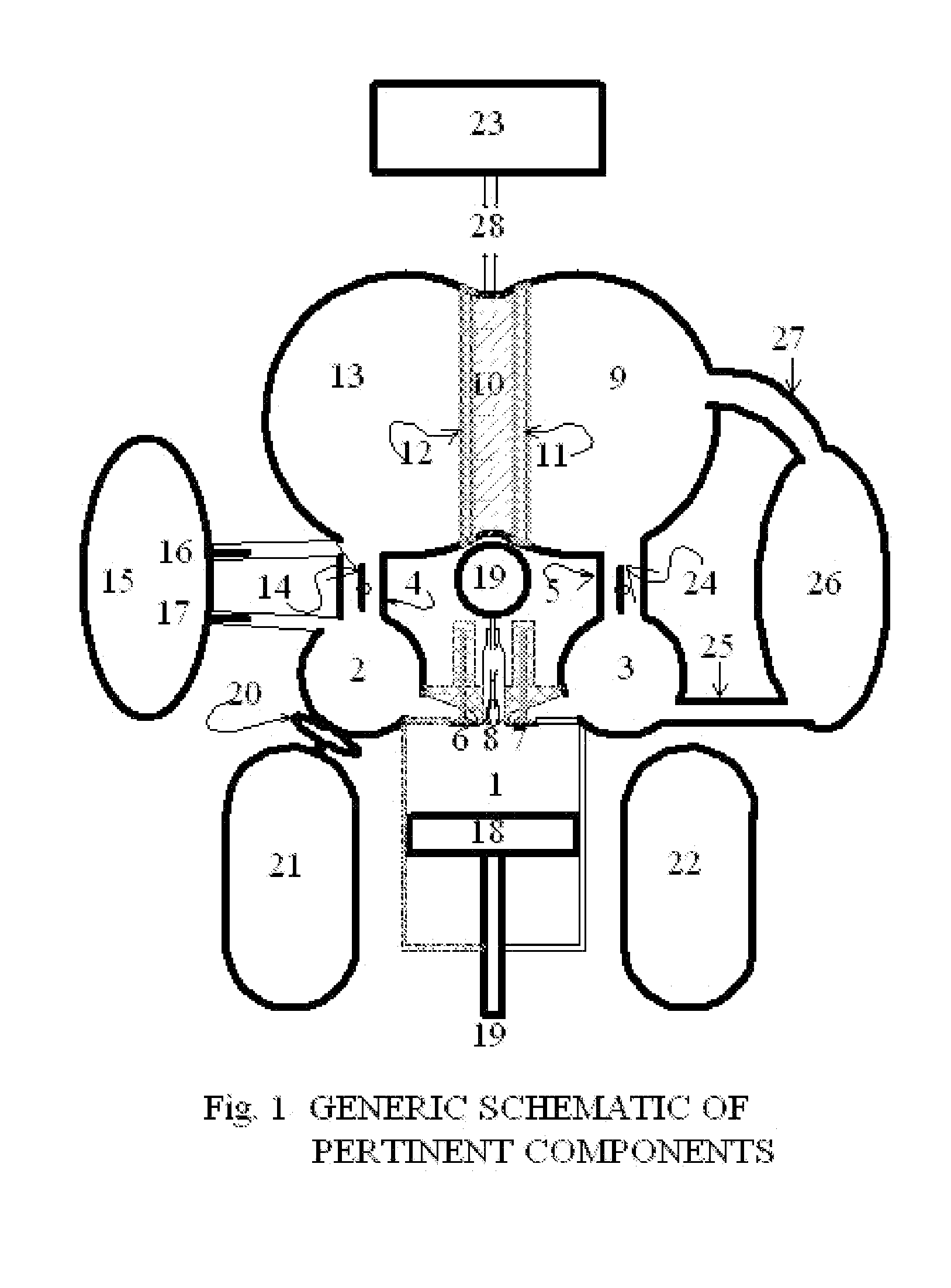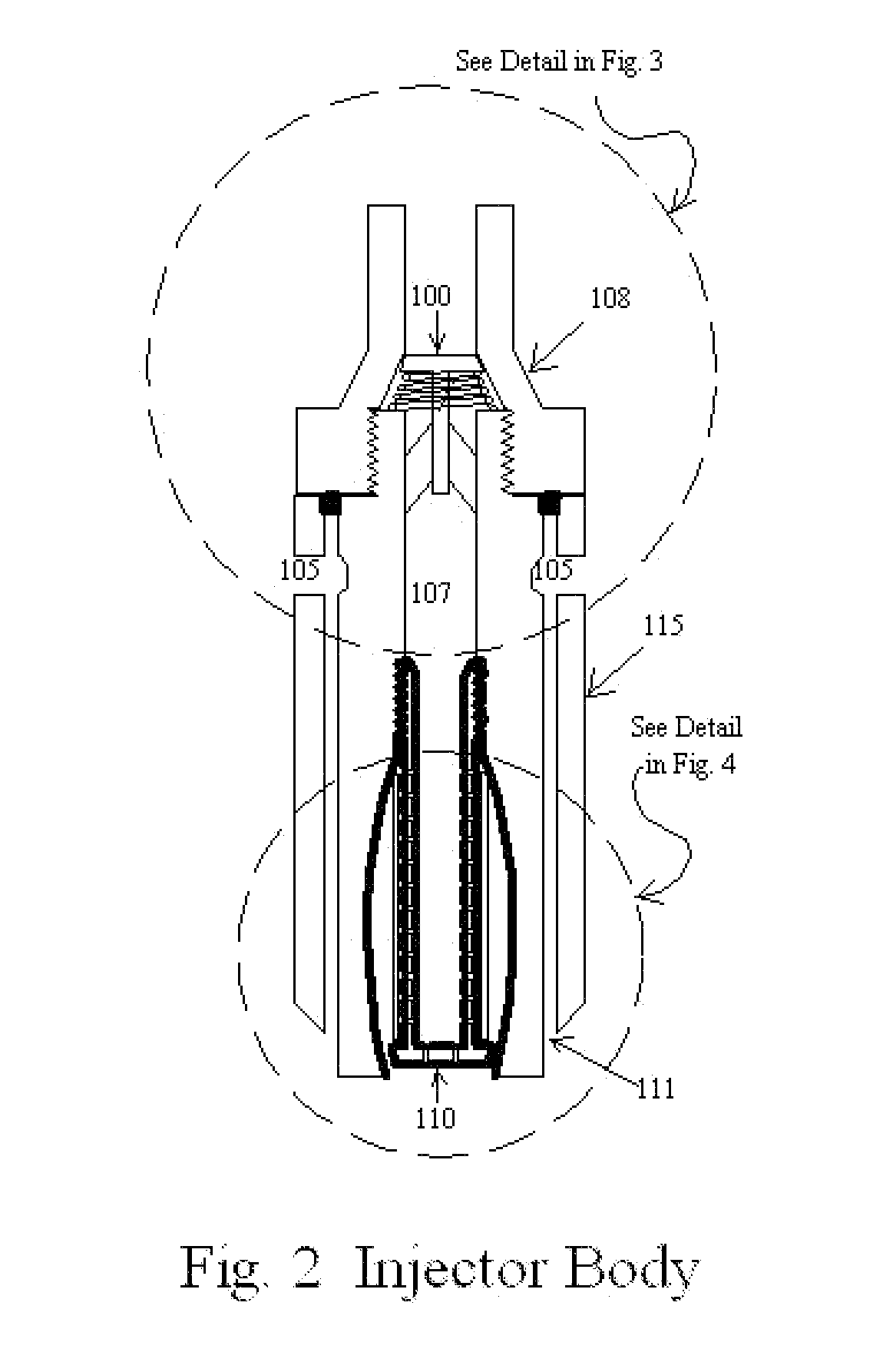RAKH Cycle, Boilerless, Airless, Hydrogen Fueled, Closed Cycle, Steam Engine
- Summary
- Abstract
- Description
- Claims
- Application Information
AI Technical Summary
Problems solved by technology
Method used
Image
Examples
Embodiment Construction
[0019]FIG. 1 illustrates a simplified schematic of the preferred embodiment of the present invention as a piston and cylinder type engine. Piston 18 is connected to a typical crankshaft (not shown) by a connecting rod 19 in a typical piston engine arrangement that converts oscillating motion to rotary mechanical energy that performs the output work of the RAKH engine. The crankshaft also returns some of the rotary mechanical energy thru the connecting rod 19 to suck in a charge of fuel and subsequently compress that intake charge. This detailed description assumes as an arbitrary starting point, the intake of Hydrogen and Helium from the intake manifold 2 thru intake valve 6 into the combustion chamber 1. The Helium is circulated thru the closed system loop, and is never lost from the closed loop system. The pressure of the Helium is fairly constant unless it is pumped out of the system into the Quench gas storage tank 15, which operation will not be described until later, but that ...
PUM
 Login to View More
Login to View More Abstract
Description
Claims
Application Information
 Login to View More
Login to View More - R&D
- Intellectual Property
- Life Sciences
- Materials
- Tech Scout
- Unparalleled Data Quality
- Higher Quality Content
- 60% Fewer Hallucinations
Browse by: Latest US Patents, China's latest patents, Technical Efficacy Thesaurus, Application Domain, Technology Topic, Popular Technical Reports.
© 2025 PatSnap. All rights reserved.Legal|Privacy policy|Modern Slavery Act Transparency Statement|Sitemap|About US| Contact US: help@patsnap.com



